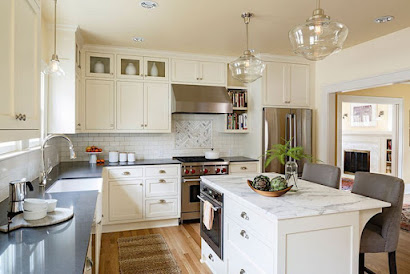What is Remodelling of House?
What is House Remodeling?
House remodeling refers to the process of making significant changes or improvements to a home’s structure, layout, or aesthetic elements. Unlike renovations, which typically focus on restoring or updating existing features, remodeling transforms the space in a more substantial way. Home remodeling can range from simple projects like upgrading a kitchen or bathroom to more complex ones such as adding rooms, changing the layout, or even rebuilding parts of the house. It is designed to meet the changing needs or desires of homeowners and can significantly increase a property’s value.
Types of Home Remodeling
There are two main types of home remodeling: cosmetic remodeling and structural remodeling.
Cosmetic Remodeling: Cosmetic remodeling refers to aesthetic improvements that refresh the look of a space without altering its structure. This type of remodeling usually focuses on surfaces and finishes. Common cosmetic updates include:
- Painting: Refreshing walls, ceilings, or trim with new paint.
- Flooring: Replacing or refinishing flooring such as hardwood, tiles, or carpets.
- Cabinets and Fixtures: Installing new cabinets, countertops, or light fixtures to update the space.
- Landscaping: Changing the appearance of your garden or backyard to improve curb appeal.
Cosmetic remodeling is typically more affordable and quicker to complete, making it a popular choice for homeowners looking for an update without major construction.
Structural Remodeling: Structural remodeling involves altering the core structure or layout of a home. This can include moving walls, adding new rooms, or even expanding the home’s foundation. Structural changes often require permits and more extensive planning. Examples of structural remodeling include:
- Room Additions: Adding new rooms such as a bedroom, home office, or sunroom to accommodate a growing family or changing needs.
- Changing Floor Plans: Open floor plans are popular today, so homeowners might remove walls or partitions to create more spacious, connected living areas.
- Basement or Attic Conversions: Converting unused space into livable areas, such as a finished basement or an attic turned into a bedroom or office.
- Foundation Work: Repairing or altering the foundation to make room for an addition or ensure structural stability.
Structural remodeling is typically more complex, time-consuming, and expensive compared to cosmetic updates. However, it can dramatically transform a home, improving its functionality, flow, and overall value.
Benefits of Home Remodeling
Improved Functionality: Remodeling can improve how a home works for its inhabitants. For example, if a family needs more space, adding rooms or adjusting the floor plan can make the home more functional.
Increased Property Value: Major home remodeling projects can increase a home’s market value, especially if they enhance the property’s appeal and functionality. Kitchens, bathrooms, and room additions are particularly impactful when it comes to resale value.
Enhanced Comfort: Home remodeling allows homeowners to create spaces that suit their lifestyle, such as updating a kitchen with modern appliances or adding a home office to accommodate remote work.
Personalization: Remodeling gives homeowners the opportunity to customize their space according to their tastes, turning a generic home into a personalized sanctuary.
Conclusion
House remodeling is a transformative process that can enhance the beauty, functionality, and value of a home. Whether you’re looking to refresh your space with cosmetic changes or make significant structural updates, remodeling can help achieve your vision. While structural remodeling is more involved and expensive, cosmetic updates can provide an instant refresh with less effort. Regardless of the type of remodeling, it's an investment that can greatly improve your home’s livability and appeal.



Comments
Post a Comment